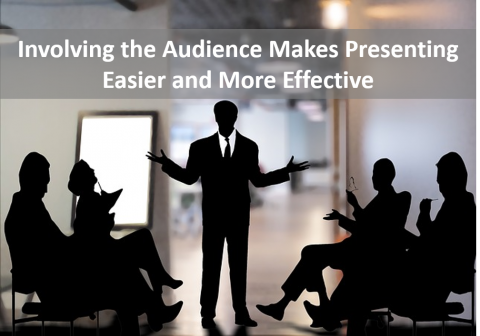"Most meetings are a waste of time and energy."
If you agree with that statement, then you might find this article useful.
Here is the problem:
- Most meetings invite people to be passive observers.
- Many meetings don't have a clear purpose.
- Many meetings feel like they “papered the house.” If it seems likely that a theater performance is going to be sparsely attended, they often “paper the house” giving free tickets to anyone and everyone, just so there is an audience.
- In the absence of any clear purpose, speakers show countless slides in order to make it seem like something important is happening. It’s not.
I believe you can make meetings more effective and easier to plan. Here are some tips. Use The Energy Bar™ to guide your planning.

What energy do we need from this meeting?
You’ve got three choices: You might want these people to be Strong Supporters, Willing to give something a try, or simply be Interested in the topic. (Interest could include curiosity and concern.) Those are your choices.
If you’re tempted to answer, “We just want to inform them,” then consider informing them in some other way. Pulling people together to hear someone talk is an inefficient way of transmitting information and no guarantee that they will actually retain what they heard.
Then ask, What energy are we likely to get?
They could come to the meeting as Strong Supporters, Willing, or Interested. Or, perhaps they are simply Not Interested in what you are talking about; Grumbling about this topic; or ready to Oppose you. Or maybe you don’t know where their energy is. If that is the case, I don’t believe you can design an effective meeting if you don‘t know your audience.
Mind the Gap.
The gap between the energy you need and where they are is critical. It should be the foundation for your planning. Ask yourself, What can we do to shift energy closer to what we need?
Some things to consider as you plan:
- Invite the right people. Decide who needs to be at the meeting in order to make good decisions. Don’t invite people who can’t make decisions. Only allow substitutes if they have full authority to talk and make decisions on behalf of the person they are replacing.
- Expect something to get done. Make sure everyone knows that you want the group to make a decision on X. Insist that they come prepared to work.
- Consider using a facilitator to help you design the meeting, so that conversation versus presentation is emphasized. (The facilitator could be someone on your team who is good at coming up with good ways to design and run meetings.)
- Take The Energy Bar™ assessment. (It’s only three questions.) Read the answer sheet to see if it gives you some ideas for bridging that gap in energy? www.energybartools.com
Caveat: perhaps the energy you need is the energy you anticipate getting. That’s great, just make sure that your meeting design is likely to keep energy high. If the energy you need is in fact the energy you expect to get, the assessment may be helpful generating new ideas and strategies.
I wish you well.
Rick Maurer
Image from pixabay.

 Rick has advised leaders from many countries on ways to apply this new tool successfully.
Rick has advised leaders from many countries on ways to apply this new tool successfully.





